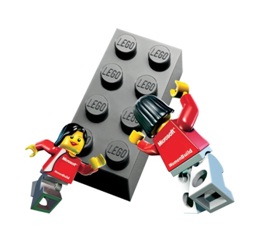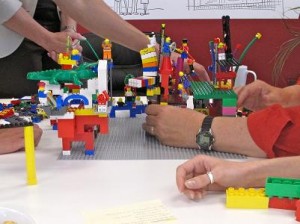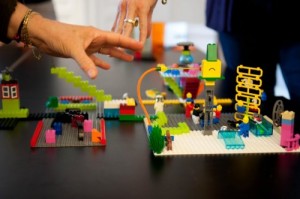Warning: Illegal string offset 'title' in /usr/www/users/playsn/pibold/wp-content/plugins/table-of-content/plugin.php on line 48
Warning: Cannot assign an empty string to a string offset in /usr/www/users/playsn/pibold/wp-content/plugins/table-of-content/plugin.php on line 48
Warning: Illegal string offset 'title-tag' in /usr/www/users/playsn/pibold/wp-content/plugins/table-of-content/plugin.php on line 50
Warning: Illegal string offset 'title-tag' in /usr/www/users/playsn/pibold/wp-content/plugins/table-of-content/plugin.php on line 52
Warning: DOMDocument::loadXML(): Opening and ending tag mismatch: hr line 5 and body in Entity, line: 6 in /usr/www/users/playsn/pibold/wp-content/plugins/wordpress-amazon-associate/APaPi/AmazonProduct/Result.php on line 149
Warning: DOMDocument::loadXML(): Opening and ending tag mismatch: body line 5 and html in Entity, line: 7 in /usr/www/users/playsn/pibold/wp-content/plugins/wordpress-amazon-associate/APaPi/AmazonProduct/Result.php on line 149
Warning: DOMDocument::loadXML(): EndTag: '</' not found in Entity, line: 8 in /usr/www/users/playsn/pibold/wp-content/plugins/wordpress-amazon-associate/APaPi/AmazonProduct/Result.php on line 149
Warning: Invalid argument supplied for foreach() in /usr/www/users/playsn/pibold/wp-content/plugins/wordpress-amazon-associate/APaPi/AmazonProduct/Result.php on line 160
Warning: DOMDocument::loadXML(): Opening and ending tag mismatch: hr line 5 and body in Entity, line: 6 in /usr/www/users/playsn/pibold/wp-content/plugins/wordpress-amazon-associate/APaPi/AmazonProduct/Result.php on line 149
Warning: DOMDocument::loadXML(): Opening and ending tag mismatch: body line 5 and html in Entity, line: 7 in /usr/www/users/playsn/pibold/wp-content/plugins/wordpress-amazon-associate/APaPi/AmazonProduct/Result.php on line 149
Warning: DOMDocument::loadXML(): EndTag: '</' not found in Entity, line: 8 in /usr/www/users/playsn/pibold/wp-content/plugins/wordpress-amazon-associate/APaPi/AmazonProduct/Result.php on line 149
Warning: Invalid argument supplied for foreach() in /usr/www/users/playsn/pibold/wp-content/plugins/wordpress-amazon-associate/APaPi/AmazonProduct/Result.php on line 160
Warning: DOMDocument::loadXML(): Opening and ending tag mismatch: hr line 5 and body in Entity, line: 6 in /usr/www/users/playsn/pibold/wp-content/plugins/wordpress-amazon-associate/APaPi/AmazonProduct/Result.php on line 149
Warning: DOMDocument::loadXML(): Opening and ending tag mismatch: body line 5 and html in Entity, line: 7 in /usr/www/users/playsn/pibold/wp-content/plugins/wordpress-amazon-associate/APaPi/AmazonProduct/Result.php on line 149
Warning: DOMDocument::loadXML(): EndTag: '</' not found in Entity, line: 8 in /usr/www/users/playsn/pibold/wp-content/plugins/wordpress-amazon-associate/APaPi/AmazonProduct/Result.php on line 149
Warning: Invalid argument supplied for foreach() in /usr/www/users/playsn/pibold/wp-content/plugins/wordpress-amazon-associate/APaPi/AmazonProduct/Result.php on line 160
Warning: DOMDocument::loadXML(): Opening and ending tag mismatch: hr line 5 and body in Entity, line: 6 in /usr/www/users/playsn/pibold/wp-content/plugins/wordpress-amazon-associate/APaPi/AmazonProduct/Result.php on line 149
Warning: DOMDocument::loadXML(): Opening and ending tag mismatch: body line 5 and html in Entity, line: 7 in /usr/www/users/playsn/pibold/wp-content/plugins/wordpress-amazon-associate/APaPi/AmazonProduct/Result.php on line 149
Warning: DOMDocument::loadXML(): EndTag: '</' not found in Entity, line: 8 in /usr/www/users/playsn/pibold/wp-content/plugins/wordpress-amazon-associate/APaPi/AmazonProduct/Result.php on line 149
Warning: Invalid argument supplied for foreach() in /usr/www/users/playsn/pibold/wp-content/plugins/wordpress-amazon-associate/APaPi/AmazonProduct/Result.php on line 160
Warning: DOMDocument::loadXML(): Opening and ending tag mismatch: hr line 5 and body in Entity, line: 6 in /usr/www/users/playsn/pibold/wp-content/plugins/wordpress-amazon-associate/APaPi/AmazonProduct/Result.php on line 149
Warning: DOMDocument::loadXML(): Opening and ending tag mismatch: body line 5 and html in Entity, line: 7 in /usr/www/users/playsn/pibold/wp-content/plugins/wordpress-amazon-associate/APaPi/AmazonProduct/Result.php on line 149
Warning: DOMDocument::loadXML(): EndTag: '</' not found in Entity, line: 8 in /usr/www/users/playsn/pibold/wp-content/plugins/wordpress-amazon-associate/APaPi/AmazonProduct/Result.php on line 149
Warning: Invalid argument supplied for foreach() in /usr/www/users/playsn/pibold/wp-content/plugins/wordpress-amazon-associate/APaPi/AmazonProduct/Result.php on line 160
Warning: DOMDocument::loadXML(): Opening and ending tag mismatch: hr line 5 and body in Entity, line: 6 in /usr/www/users/playsn/pibold/wp-content/plugins/wordpress-amazon-associate/APaPi/AmazonProduct/Result.php on line 149
Warning: DOMDocument::loadXML(): Opening and ending tag mismatch: body line 5 and html in Entity, line: 7 in /usr/www/users/playsn/pibold/wp-content/plugins/wordpress-amazon-associate/APaPi/AmazonProduct/Result.php on line 149
Warning: DOMDocument::loadXML(): EndTag: '</' not found in Entity, line: 8 in /usr/www/users/playsn/pibold/wp-content/plugins/wordpress-amazon-associate/APaPi/AmazonProduct/Result.php on line 149
Warning: Invalid argument supplied for foreach() in /usr/www/users/playsn/pibold/wp-content/plugins/wordpress-amazon-associate/APaPi/AmazonProduct/Result.php on line 160
 Michael Tarnowski has been certified and qualified to become a Facilitator for the LEGO Serious Play™ methodology(LSP) for strategic development, approved by the Association of Master Trainers of LSP.
Michael Tarnowski has been certified and qualified to become a Facilitator for the LEGO Serious Play™ methodology(LSP) for strategic development, approved by the Association of Master Trainers of LSP.
LEGO Serious Play
[Top]
 LEGO Serious Play™ (LSP) is a rigorous method influenced by systems thinking, strategy and organisational development. It is a facilitated thinking, communication and problem solving technique. LSP is used with organizations, teams and individuals. It draws on extensive research from the fields of business, organization development, psychology and learning. The LEGO Serious Play™ process uses LEGO™ bricks to create metaphors for real business issues which allows you and your team to visualize situations and address complex issues without simplifying or losing the important details. During a structured process, participants creates with LEGO building bricks models that express their thoughts, reflections and ideas. By gathering participants and literally bringing — and building — situations to life, LSP invites you to look at reality in a new and objective way. The three-dimensional landscape and its internal and external connections you build using LEGO bricks provides valuable insights into the ways your company works and how it is connect with the outside world. LSP is a innovative tool that helps you in dealing with complexity and lets your mind create and organise new thoughts. It is an experiential method used at organisations worldwide to unlock the full potential of managers and staff. The LSP process is designed to enhance innovation and business performance by systems thinking, strategy and organisational development. It is a powerful approach that helps diverse groups of people to engage in creative ways to develop solutions to complex issues.
LEGO Serious Play™ (LSP) is a rigorous method influenced by systems thinking, strategy and organisational development. It is a facilitated thinking, communication and problem solving technique. LSP is used with organizations, teams and individuals. It draws on extensive research from the fields of business, organization development, psychology and learning. The LEGO Serious Play™ process uses LEGO™ bricks to create metaphors for real business issues which allows you and your team to visualize situations and address complex issues without simplifying or losing the important details. During a structured process, participants creates with LEGO building bricks models that express their thoughts, reflections and ideas. By gathering participants and literally bringing — and building — situations to life, LSP invites you to look at reality in a new and objective way. The three-dimensional landscape and its internal and external connections you build using LEGO bricks provides valuable insights into the ways your company works and how it is connect with the outside world. LSP is a innovative tool that helps you in dealing with complexity and lets your mind create and organise new thoughts. It is an experiential method used at organisations worldwide to unlock the full potential of managers and staff. The LSP process is designed to enhance innovation and business performance by systems thinking, strategy and organisational development. It is a powerful approach that helps diverse groups of people to engage in creative ways to develop solutions to complex issues.
The LEGO Serious Play Methode
[Top]
 LEGO Serious Play™ (LSP) is a method based on a robust set of theories, predominantly from the domains of strategy, organisational behaviour, systems thinking as well as learning and development. In the mid-1990s Johan Roos and Bart Victor developed the “serious play” concept and process as way to enable managers to describe, create and challenge their views of their business. LSP draws on many ideas from the fields of psychology and behavioral science: (1) Mihaly Csikszentmihalyi’s concept of Flow ; (2) Seymour Papert’s Constructionistic resp. Jean Piaget’s constructivism learning theories; (3) complex adaptive system theory; (4) autopoietic corporate epistemology applied to the context of management and organisations; (5) importance of Play (eg. Stuart Brown); (6) notion of Imagination; and (7) recent academic work on Self-identity and Self-expression (eg. David Gauntlett) — just to mention only the most influencing ones. To put it short: the research on psychology and behavioral science shows that hands-on, minds-on learning produces a deeper, more meaningful understanding of the world and its possibilities — much more than listening or reading.
LEGO Serious Play™ (LSP) is a method based on a robust set of theories, predominantly from the domains of strategy, organisational behaviour, systems thinking as well as learning and development. In the mid-1990s Johan Roos and Bart Victor developed the “serious play” concept and process as way to enable managers to describe, create and challenge their views of their business. LSP draws on many ideas from the fields of psychology and behavioral science: (1) Mihaly Csikszentmihalyi’s concept of Flow ; (2) Seymour Papert’s Constructionistic resp. Jean Piaget’s constructivism learning theories; (3) complex adaptive system theory; (4) autopoietic corporate epistemology applied to the context of management and organisations; (5) importance of Play (eg. Stuart Brown); (6) notion of Imagination; and (7) recent academic work on Self-identity and Self-expression (eg. David Gauntlett) — just to mention only the most influencing ones. To put it short: the research on psychology and behavioral science shows that hands-on, minds-on learning produces a deeper, more meaningful understanding of the world and its possibilities — much more than listening or reading.
When we construct something external to ourselves we gain knowledge.
LSP enhances our brain activity. Human mind is designed to work in three-dimensions. When working with LSP participants construct three-dimensional models. Through play participants find ways to solve problems. They communicate more effectively and engage their imaginations more readily to take dialogues to deeper levels. They will use three-dimensional thinking by creating and constructing metaphors(Storytelling) to describe real situations of their organisation faces. Playing with LEGO bricks forsters a certain kind of hands-on: a deeper, more meaningful understanding of the siuation and its possibilities. In a LSP session people gain understanding and clarity regarding the identity and dynamics of their organization. They are empowered to make effective decisions and do so with confidence and commitment. Why not use this fact to enhance our business?
Why LEGO Serious Play Works
[Top]
 LSP is a facilitated meeting, communication and problem-solving method, leading participants through a series of questions, which go deeper and deeper. Each participant builds his or her own three-dimensional LEGO™ model in response to the facilitator’s questions. These 3D models serve as the basis for group discussion, knowledge sharing, problem solving and decision-making. LSP is based on the concept of “hand knowledge”. The human brain is limited in how much information it can consciously handle at one time, the so-called working memory. Thus, we “know“ a lot more at any given moment than we think we know. Our hands are connected to between 70 – 80% of our brain cells. When our hands are used in learning, a complicated process takes place that generates a powerful emotional charge: by building a 3D model of the a situation at hand, we externalise what we know and what we can imaging about a certain problem; when developing and sharing an associated story covering the meaning of the model we construct new knowledge and communicate it. The LSP training methodology is a radical and innovative facilitated process employing three-dimensional metaphorical models of issues. It challenges to foster creative thinking and engages participants in exploring and re-thinking connections and systems. By connecting hands and minds, LSP unveils the creativity of participants in a way that creates shared understanding and generates new insights. It deepens the reflection process and supports an effective dialogue – for everyone in the organisation.
LSP is a facilitated meeting, communication and problem-solving method, leading participants through a series of questions, which go deeper and deeper. Each participant builds his or her own three-dimensional LEGO™ model in response to the facilitator’s questions. These 3D models serve as the basis for group discussion, knowledge sharing, problem solving and decision-making. LSP is based on the concept of “hand knowledge”. The human brain is limited in how much information it can consciously handle at one time, the so-called working memory. Thus, we “know“ a lot more at any given moment than we think we know. Our hands are connected to between 70 – 80% of our brain cells. When our hands are used in learning, a complicated process takes place that generates a powerful emotional charge: by building a 3D model of the a situation at hand, we externalise what we know and what we can imaging about a certain problem; when developing and sharing an associated story covering the meaning of the model we construct new knowledge and communicate it. The LSP training methodology is a radical and innovative facilitated process employing three-dimensional metaphorical models of issues. It challenges to foster creative thinking and engages participants in exploring and re-thinking connections and systems. By connecting hands and minds, LSP unveils the creativity of participants in a way that creates shared understanding and generates new insights. It deepens the reflection process and supports an effective dialogue – for everyone in the organisation.
How LEGO Serious Play Works
[Top]
LEGO Serious Play™ (LSP) is a facilitated, story-telling, process which is truly participant-centred, experiential, and embodied. LSP works across all cultures. The basic assumption of LSP is
When people come together to solve a certain problem the solution is already present in the room. They know the solution but aren’t aware of it. Thus, the solution has to be unveiled from them only.
Following this, LSP defines a four-step core process:
- Posing the Question. The facilitator poses a question to the group. The workshop participants are asked to answer the question by building with LEGO bricks and telling a story covering the meaning of the model. The question is carefully designed, clear but very open ended.
- Constructing the Model. Each participant make sense of what they know and imagine, and builds her own 3D model in response to the posed question. Besides the well known LEGO standard set of bricks participants use a special set of Lego bricks that are designed to inspire the use of metaphors and story telling.
- Sharing the Story. The individuals make a story to explain their model, i.e. their thoughts, associations, emotions and feelings coming to their mind when constructing. Since the models should not be exact representations, rather metaphors, once the models are made, each person in turn shares with the group the story of what they have made. The facilitator helps to ask questions and the group reflects. Sharing the story to the team is critical since this enables 100% participation which furthermore ensures commitment to shared actions.
- Reflecting. Questions and Reflections. The facilitator and participants crystalise key insights that are uncovered by asking clarification questions to the models. The facilitator sums up surprises and connections.
Along this line are grouped seven, so called Application Techniques. All applications of the LEGO Serious Play™ methodology make use of the core process and one or more of the seven LSP process layers. Each application technique is based on mastering the previous one(s). The higher the number (1 – 7) the more complex problem the application technique will help you address.
- Building individual Models
- Building Shared Models
- Creating a Landscape
- Making Connections
- Building a System
- Playing Emergence and Decisions
- Extracting Simple Guiding Principles
Used on different levels of abstraction these techniques can be applied to expose and discuss enterprise issues (e.g. strategy building, market segmentation) as well team building and group aspects (e.g. internal vs. external identity, shared identity, culture and values). Finally, by playing of unforeseen events and their impacts take place simple principles are unveiled which will guide assistance for further action taking when necessary.
Telling the Past and the Future
[Top]
 While creating 3D models of their emotions resp. current situation each participant tells her own story: what happens in the past, what is the current situation, and what the future could be. Each participant starts with the “right now”. She draws in relevant parts of the past and integrates this with the future hopes, aspirations and fears of everyone in the room. It is brought to the process to find out what can and should be done today. Being better at “now” results in being better prepared for challenges and opportunities in the future. Traditional business tools typically analyze the past and speculate about the future. The LSP methodology incorporate elements from the past and future and test them through scenarios on the spot — so to speak in real time— to achieve improved decision making immediately. Thus, in a very loose way LEGO Serious Play is related to Solution Focus.
While creating 3D models of their emotions resp. current situation each participant tells her own story: what happens in the past, what is the current situation, and what the future could be. Each participant starts with the “right now”. She draws in relevant parts of the past and integrates this with the future hopes, aspirations and fears of everyone in the room. It is brought to the process to find out what can and should be done today. Being better at “now” results in being better prepared for challenges and opportunities in the future. Traditional business tools typically analyze the past and speculate about the future. The LSP methodology incorporate elements from the past and future and test them through scenarios on the spot — so to speak in real time— to achieve improved decision making immediately. Thus, in a very loose way LEGO Serious Play is related to Solution Focus.
Where LEGO Serious Play Works
[Top]
 The LEGO Serious Play™ (LSP) programs are being used at companies worldwide that are looking for innovative ways to increase the commitment, confidence and insight of their executives, managers and employees. The programs are in use for a broad range of purposes, including
The LEGO Serious Play™ (LSP) programs are being used at companies worldwide that are looking for innovative ways to increase the commitment, confidence and insight of their executives, managers and employees. The programs are in use for a broad range of purposes, including
- Strategy development and exploration
- Examine and evaluate relations to external partners and clients.
- Organizational development
- For management, teams and individual employees.
- Innovation and product development
- Unleash creative thinking and transform ideas into concrete concepts.
- Change management
- Facilitate and implement structural changes and mergers.
Applications for Organisations, Teams and Individuals
[Top]
 Engage in hands-on approach of play to unleash the power of creativity and innovation in daily work
Engage in hands-on approach of play to unleash the power of creativity and innovation in daily work- Show team members how they bring creativity and innovation practices into teams
- Practice Divergent and Convergent tools in generating ideas and selecting ideas
- Apply the Creativity and Innovation tools in transforming the workforce
- Create a Team approach in business creativity and innovation
- Ensure the team is committed to innovation and plans of action to stay ahead in business
Experience shows great relevance of the LSP method in areas such as Scenario development and testing, Mergers & Acquisitions, Branding, Leadership and Team Development, Turnaround & Restructuring, Market Entry, Operational Efficiency and Competitive Analysis. Until 2009 LEGO Serious Play™ was a license model for certified partners only. Since 2010 LSP became Open Source, meaning that everybody can buy and use the special LEGO kits. Nevertheless, to become trained in the methodology and become a certified LSP Facilitator you have to pass a special qualification path approved by the Association of Master Trainers of LSP. Organisations using LSP include Daimler Chrysler, Novo Nordisk, KLM en Rijkswaterstaat, Roche Pharmaceutical, SABMiller, Tupperware, Nokia, Orange, Google, Hewlett Packard, Microsoft, SAP, Quantas, Shell, Luxottica, Allianz, Wyeth, Daikin, Ernst&Young, Coca Cola Amortil.
Weblinks
[Top]
- Serious Play Pro: LEGO Serious Play Open Source Facilitator web site (not affiliated to the LEGO group)
- LEGO Group: LEGO Serious Play web site
- LEGO Group: Educatorsweb – Home for Seriousplay
Further Readings
[Top]
- David Gauntlett: Creative Explorations: New Approaches to Identities and Audiences. Routledge Chapman & Hall, 2007.
- David Gauntlett: Making is Connecting. Polity, 2011.
- Dave Gray, Sunni Brown, James Macanufo: Gamestorming: A Playbook for Innovators, Rulebreakers, and Changemakers. O’Reilly Media, 2010.
- Youtube: Representing Identities (Part 1: Method), David Gauntlett.
- Youtube: Representing Identities (Part 2: Findings), David Gauntlett.



Leave a Reply